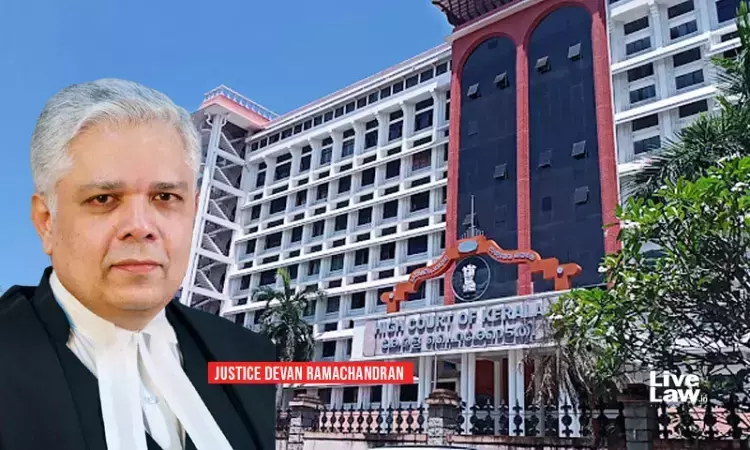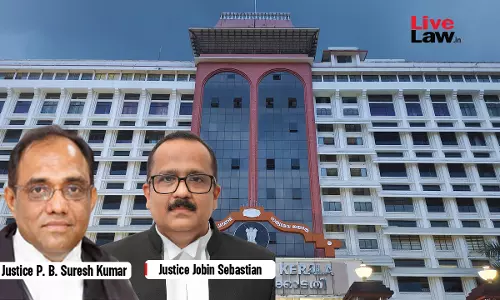Right Of Lateral Support Available To Neighbouring Owner Only So Long As He Keeps His Land In Its Natural State: Kerala High Court

The Kerala High Court was recently faced with the question as to whether the removal of soil by a landowner, subsequent to the institution of a suit, would disentitle such landowner from raising a claim for easement right of lateral support from his neighbour's land.The Single Judge Bench of Justice P.G. Ajithkumar took the view that if the unexcavated portions of the plaint schedule property...
The Kerala High Court was recently faced with the question as to whether the removal of soil by a landowner, subsequent to the institution of a suit, would disentitle such landowner from raising a claim for easement right of lateral support from his neighbour's land.
The Single Judge Bench of Justice P.G. Ajithkumar took the view that if the unexcavated portions of the plaint schedule property are left as such, the lateral support to the landowner's property, which is retained in its original level can be ensured. The Court however, added that if the landowner also lowered the level of his respective properties, he would then be precluded from claiming natural right of lateral support in view of Section 7 of the Indian Easement Act, 1882 ('Easements restrictive of certain rights').
The plaintiff in the suit (appellant herein) sought an injunction decree restraining the defendants (respondents herein) from causing any obstruction to the removal of earth and levelling of plaint schedule property up to the present level of the defendants’ property, which are situated on the northern and eastern side of the plaint schedule. The plaintiff was aggrieved that the defendants had already excavated soil from their respective properties and that the portions of the plaintiff’s property remain on a higher level thus has to be lowered for the purposes of constructing a compound wall and protecting his property.
The defendants set forth a counter claim seeking an injunction against the plaintiff prohibiting him from excavating and removing earth from the northern extremity of his property. It was contended that in the event of removing soil from the plaint schedule property, the lateral support to the counter claim properties would be lost. It was further stated that the plaintiff had executed two agreements in favour of the original 1st and 2nd defendants undertaking that the former would not remove earth from his property at a width of two dhannu adjoining the 2nd defendant's property.
The plaintiff countered the afore argument in his replication and stated that the defendants had already excavated soil from their property and thus had no right to claim lateral support. The Munsiff Court dismissed the suit as well as the counter claim, which was confirmed by the Additional Sub-Court.
The Court in this case took note that since the courts below had dismissed the suit for default, the first and second defendants or their successors would not be entitled to sue anew on the same cause of action. It added that Rule 9 of Order IX of CPC also creates a total bar for a plaintiff, whose suit was dismissed for default, to bring a fresh suit in respect of the same cause of action. The Court further observed that the Sub Judge had also confirmed the decree, and dismissed the counter claim. The Court observed that since the judgment and decree of the Sub Judge had not been challenged, the same had become final.
The Court was concerned with the question as to what would be the effect of removal of soil from the defendants’ property subsequent to the institution of the suit.
The Court noted that as per the Commissioner's report, earth had not been removed from a few portions of the plaint schedule property, adjoining the defendant's property, and which they thus wanted to retain at the original level at a width of two dhannu in order to ensure lateral support to their property.
Relying upon the decision in Kalyani v. Bhaskaran (1993), wherein it had been observed that the right of an individual owner of land is subject to the right of lateral support available to his neighbour’s land, the Court observed:
"...the right of the defendants to claim lateral support to their property is available only if they retained their property in its natural state".
The Court thus observed, that while it may be true that if the unexcavated portions of the plaint schedule property are left as such, the lateral support to the defendants’ property, which is retained in its original level can be ensured, but added that the defendants would not be able to claim natural right of lateral support since they had also lowered the level of their respective properties, and would thereby be precluded under Section 7 of the Easements Act.
The Court observed that the evidence had clearly disclosed that the earth from the defendants’ properties was also excavated due to which its natural state had been altered.
The Court added that the plaintiff's failure to disclose the earlier agreements with the defendants could also not be a ground to decline the relief seeking to restrain the defendants from causing obstruction to the removal of earth from the plaint schedule property upto the level of the defendants’ property, since the previous suit itself had been dismissed.
"In the nature of that relief, it is inbuilt that wherever both properties are lying on the same level, the plaintiff cannot remove earth from his property. In other parts, removal of earth from the plaintiff’s property cannot be prevented by the defendants since they already lowered level of their property. In the said circumstances, I am of the view that an injunction enabling the plaintiff to excavate and remove earth from his property as mentioned above, certainly, subject to the law including executive orders restricting and regulating removal of earth, is liable to be granted," the Court observed.
The Court thus allowed the Second Appeal. It was clarified that the present decision was not a permission to excavate or remove earth from the plaint schedule property, but that the plaintiff could remove earth from the plaint schedule property only if he had the permission as per the applicable statutory provisions and executive orders restricting and regulating excavation and removal of earth from the land.
The plaintiff/appellant was represented by Advocates Santhosh P. Poduval, R. Rajitha and Vinaya V. Nair. Advocate T.N. Manoj appeared on behalf of the respondents.
Case Title: Asokan v. Krishna Ezhuthassan & Ors.
Citation: 2023 LiveLaw (Ker) 336
Click Here To Read/Download The Judgment




